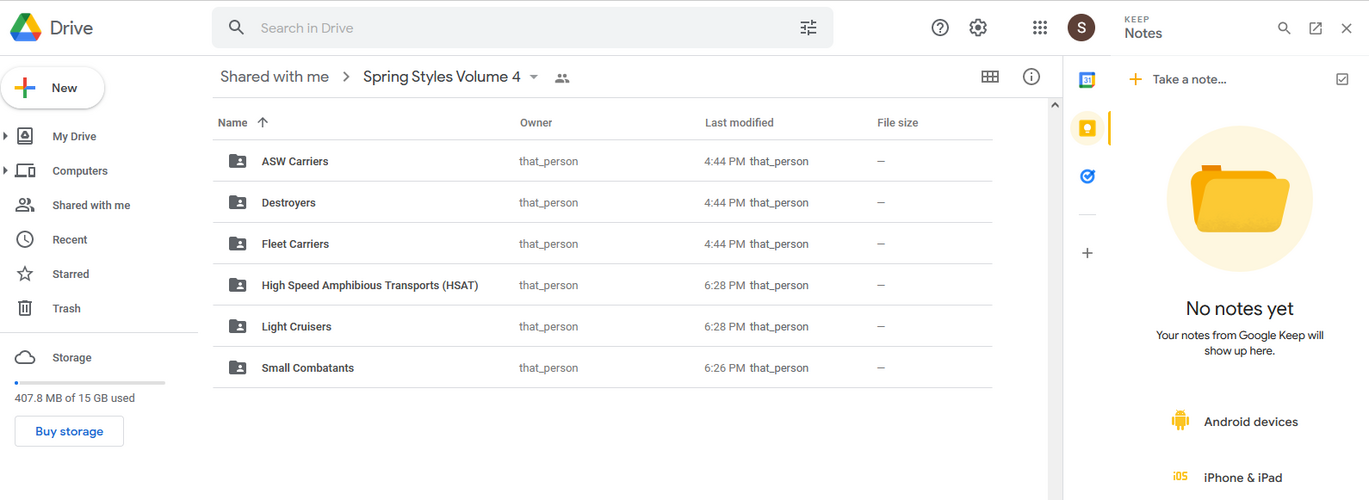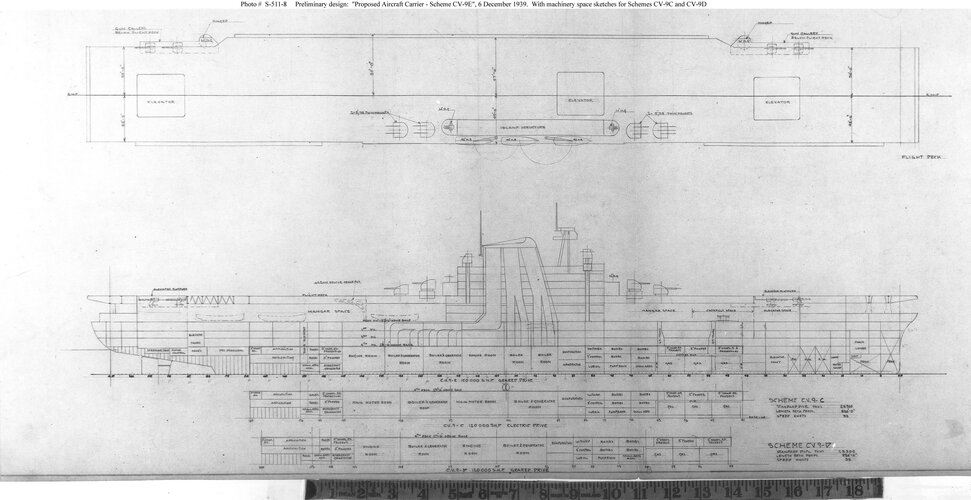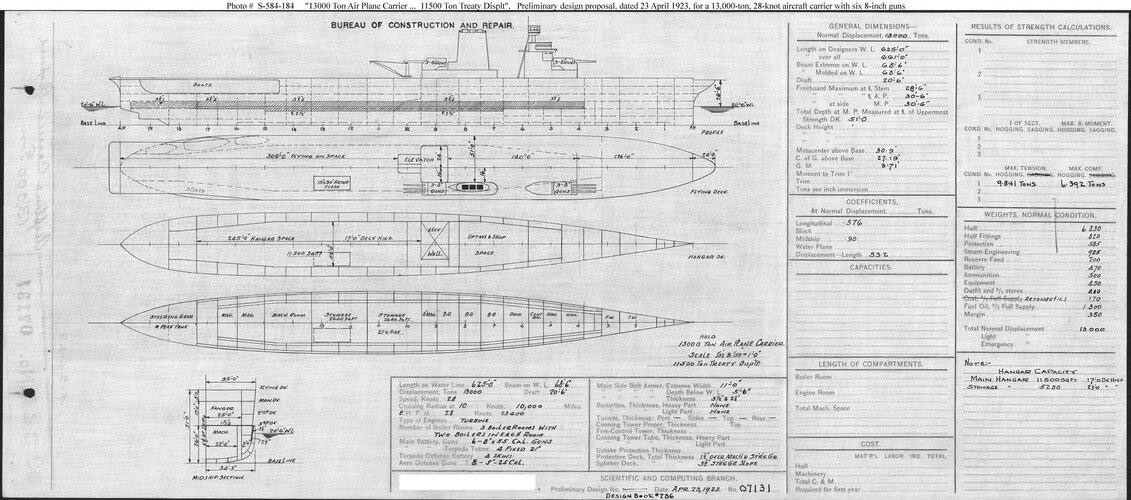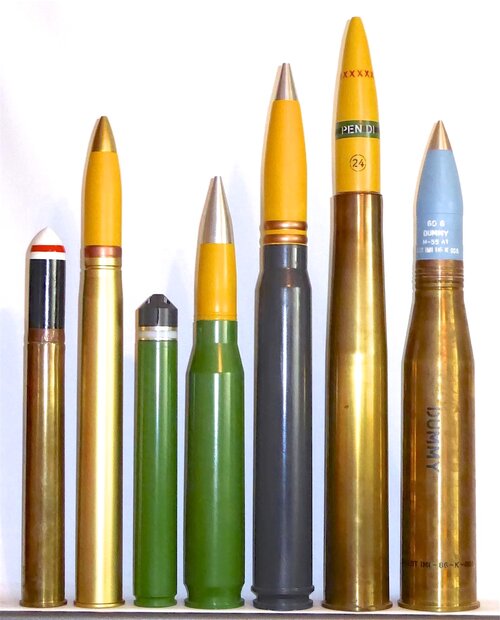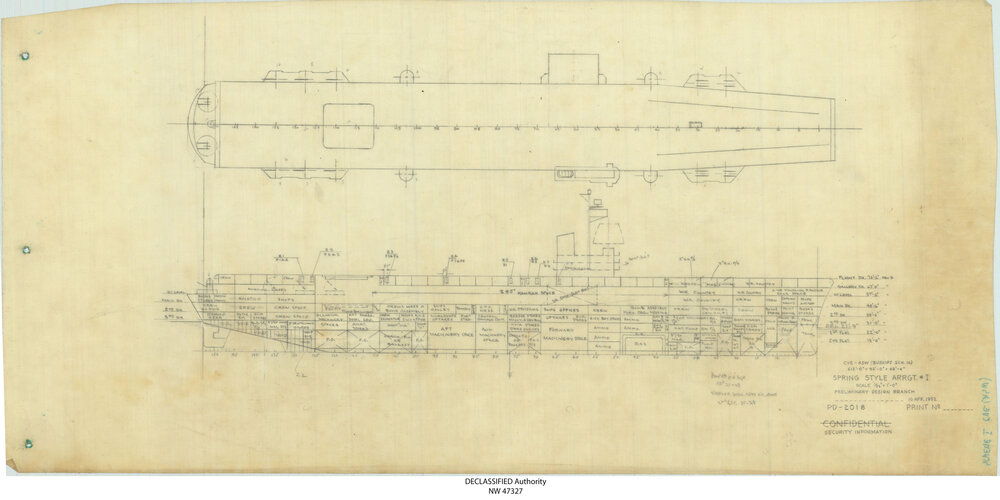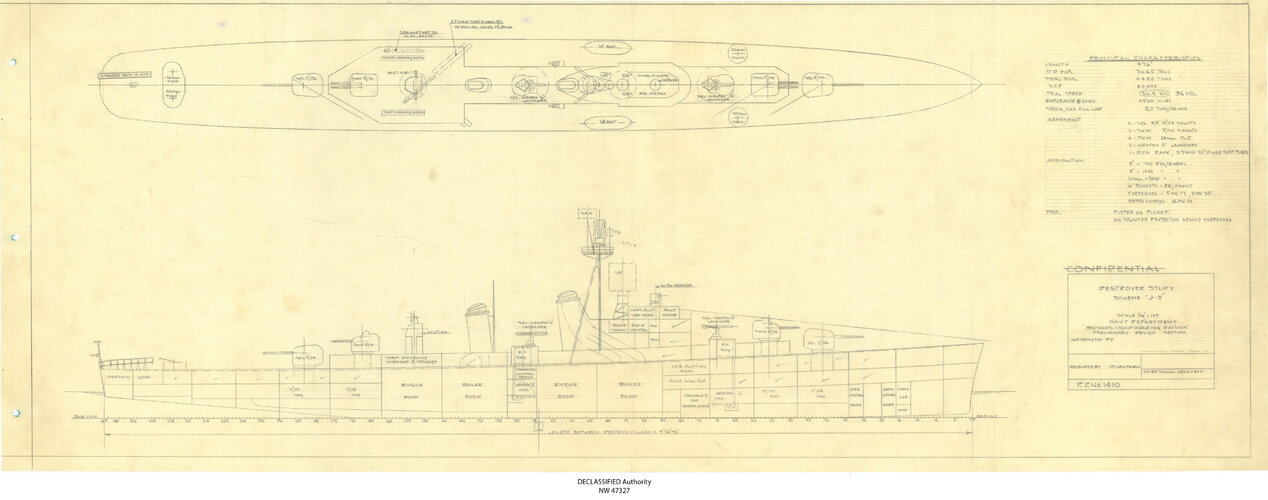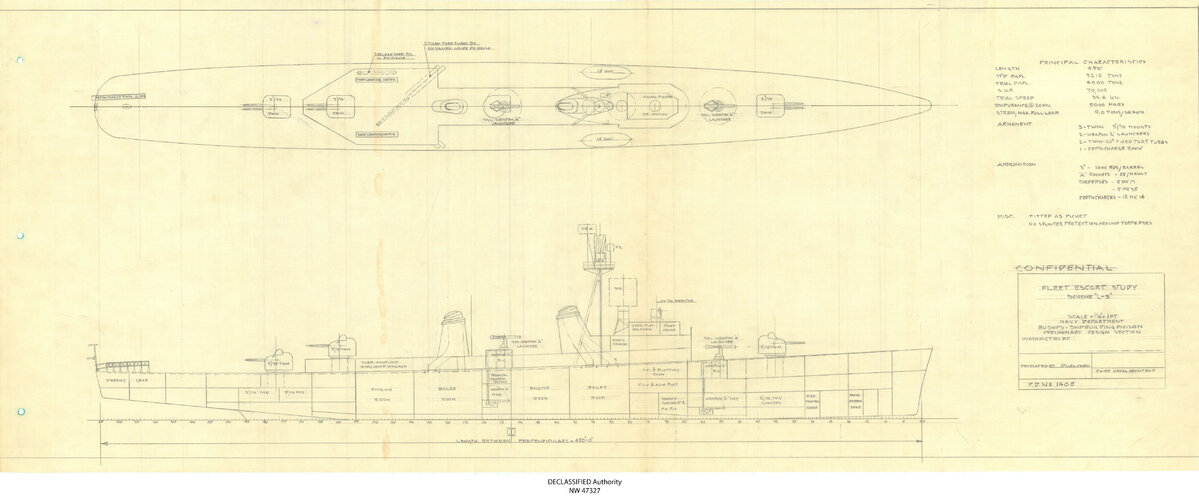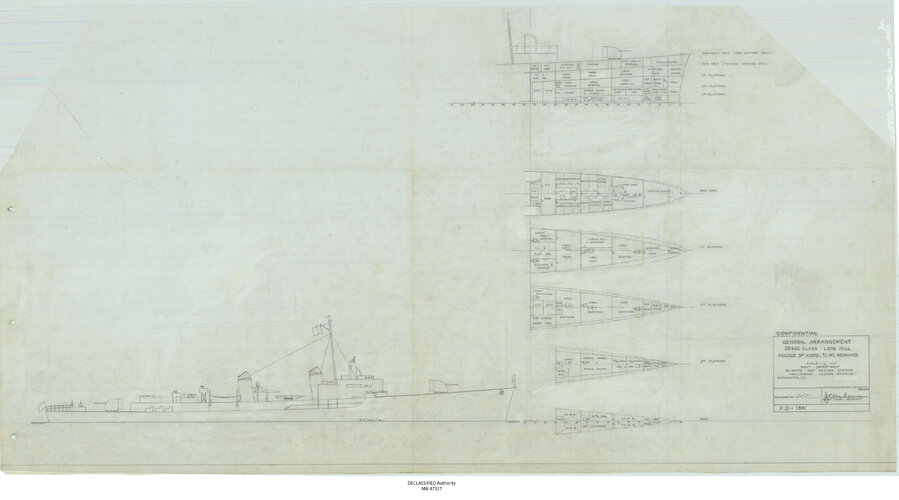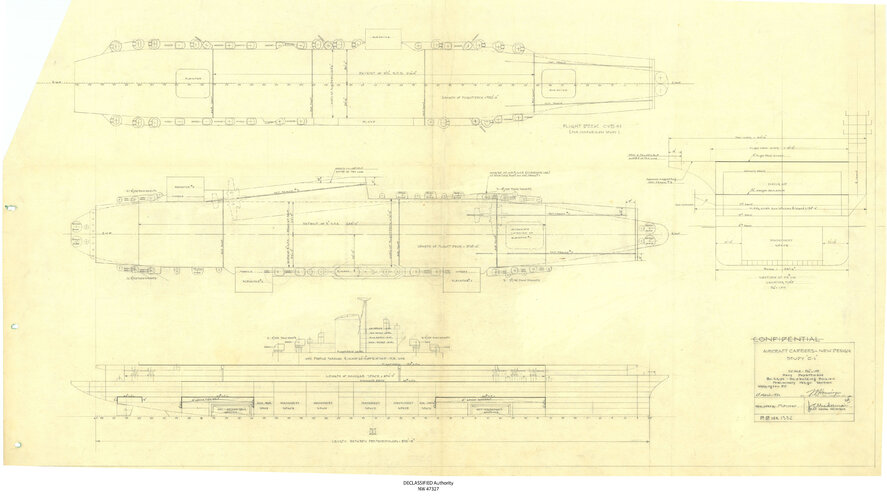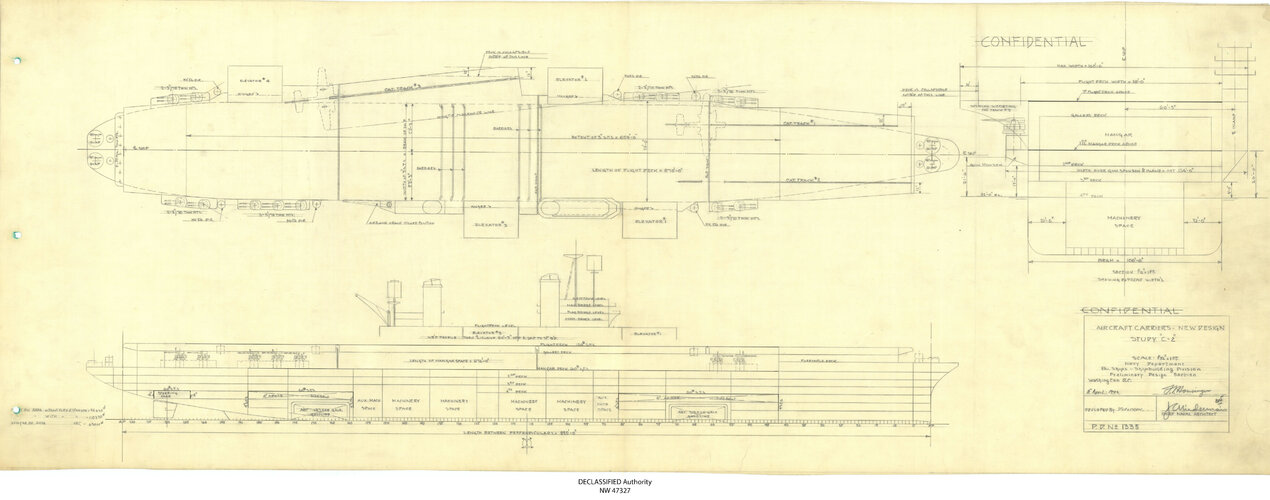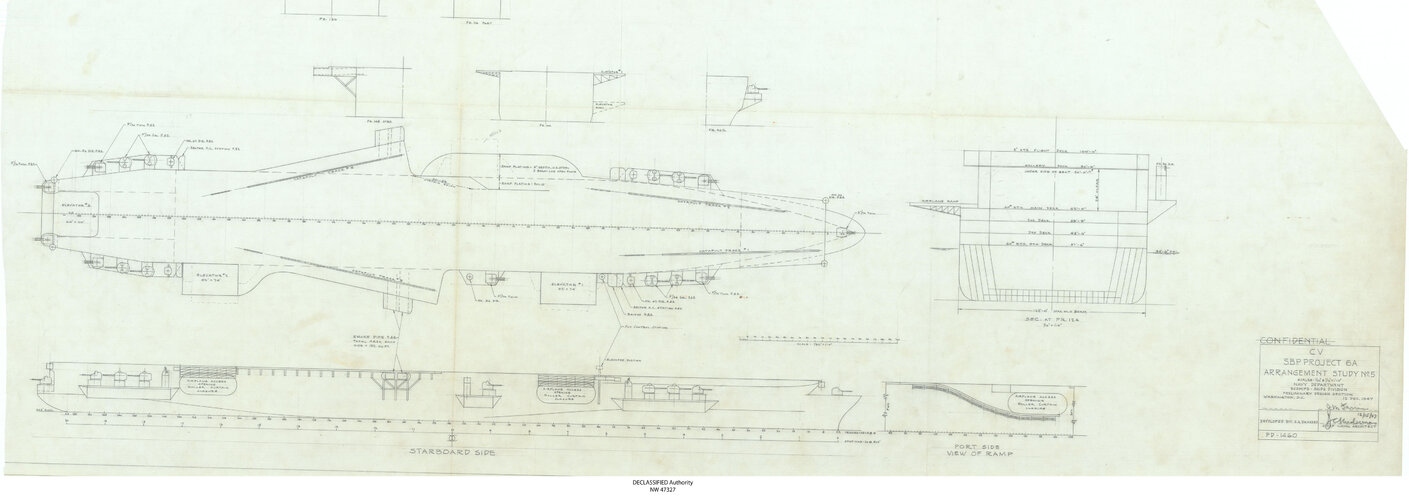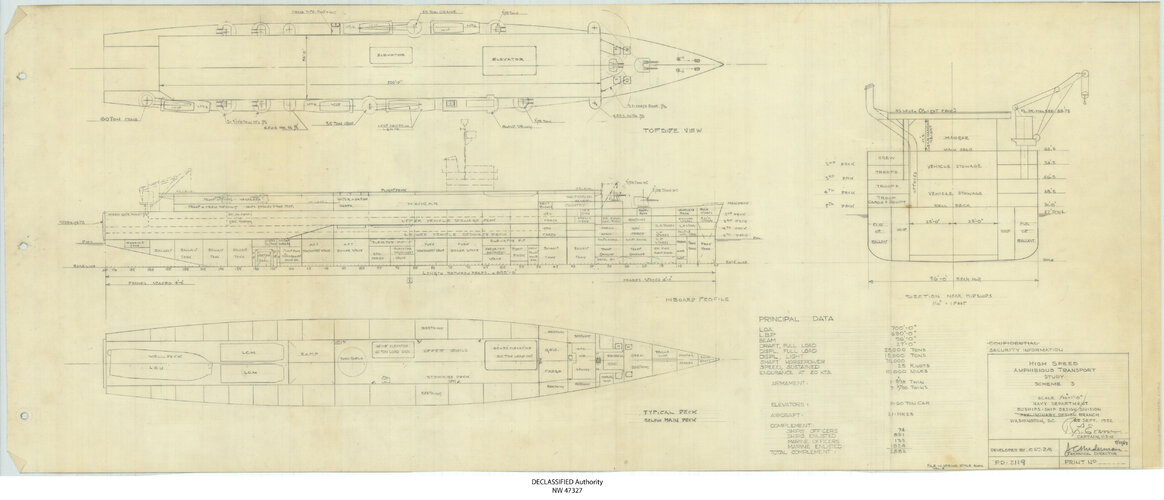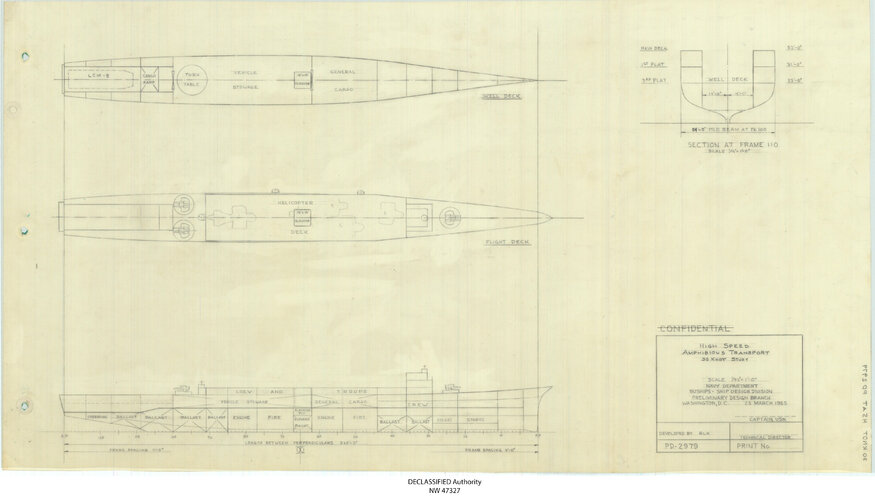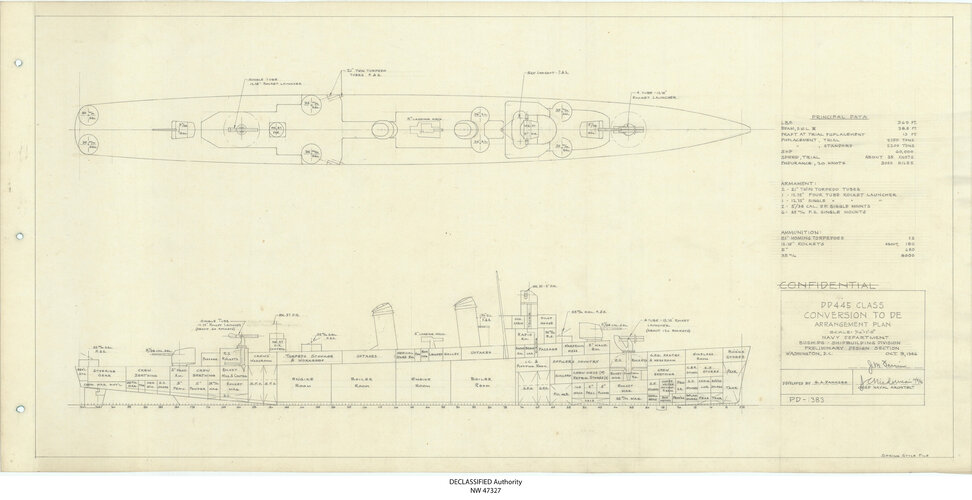Akos,
Thank you for the message. All very interesting, but the truth is not so hopeful.
The five drawings of the CVB designs all come from Spring Styles Book No.4. I attach my list of all the drawings in Book No.4. I made this list by looking at each drawing at College Park. There is nothing from Book 2 in Book 4.
I have no idea why "Point Isabel, TX" is cited on the NARA form. It must be an artifact of some sort of their website process, if not a
mistake. Book 4 was sent by the NavSea Records Manager direct from NavSea to NARA at College Park back around 2008 or 2009. The Manager personally informed me of all that at the time. It is possible, however, that a "citizen archivist" from Texas prepared the website postings; that's just a hypothesis; NARA is eager to put volunteer
"citizen archivists" to work cataloguing things. None of this
material is located in, or ever came from, Point Isabel, whatsoever.
(The nearest NARA regional branch is in Fort Worth, TX.)
I wrote the paragraph on Book 2 that appears in the Shipscribe
website. Recall that I wrote the descriptions of all Book 2 drawings
for the Naval Historical Center when working there as a volunteer,
about 15 years ago. Shipscribe (Steve Roberts) copied the Naval
History website entry and reproduced it on his website. I have the
impression that Naval History no longer posts that Spring Style
material, but maybe they have restored it now. I did a lot of
research in Bu C&R records to write the captions (and the history of
battleship design) that appears in the Book 2 descriptions.
I searched for Book 2 at the Federal Records Center several times
between about 1980 and 2010, and it is shown as "unlocated." There
are several other such design file collections that have disappeared
there (e.g., 6487 with all the pre-war aircraft carrier design books),
in addition to those stated to have been destroyed.
NavSea sent Book 1 to Naval History in 2000, and it was then
transferred via NavSea to College Park in about 2009, together with
Book 3, which had been sent to Naval History in 1984 by another NavSea
employee. I am sure that Book 2 would have been included in 2000 if
NavSea had had it, however. The clear presumption is that Book 2 got
destroyed about 1975, when many other files there were destroyed.
It is curious, of course, that the Book 1 collection was titled
"1913-1918" on its binder when in fact the mass of loose drawings
included extended as late as 1925. I can't explain that. When we
received Book 1 it was an unorganized stack of loose drawings in no
order. I rearranged them into a single sequence in chronological
order. It had some drawings as early as 1911 and some as late as
1925. So it seems possible that someone at BuShips, probably back in
the 1940s, moved some Book 2 plans into the Book 1 stack. Or maybe
the added 1918-1925 material came from another file, and was not taken
from Book 2 at all. We will never know.
Of course, there were preliminary design books before 1915 as well
(when the PI 133 Entry 449 collection begins). All those disappeared,
with the sole exception of one BB38 volume (one of a series) that
accidentally got misfiled with weight books (much less important!)
that did survive. At my initiative the archivists down there refiled
it, placing it at the end of PI 133 Entry 1283, though 449 would have
been more appropriate.
So for the designs of ~1925 to 1938, we have to rely primarily on
those that got saved in General Board (RG 80) files, and that might
survive in a few other places, e.g., Naval War College files. As a
rule, such enclosures were not saved by NARA to Bu C&R (RG 19)
correspondence. Such enclosures--countless plans in particular--would
have vastly increased the volume of space needed. There are some very
valuable 1920s preliminary design books that did survive and that are
held now at College Park, such as for some Treaty Cruiser, gunboat,
and other designs (e.g., FRC 2727, later NARA UD 1021D). But it is a
small part of what originally existed.
I regret having such bad news to report, but that is the situation.
Good luck with your continuing research!
Best wishes, Chris


